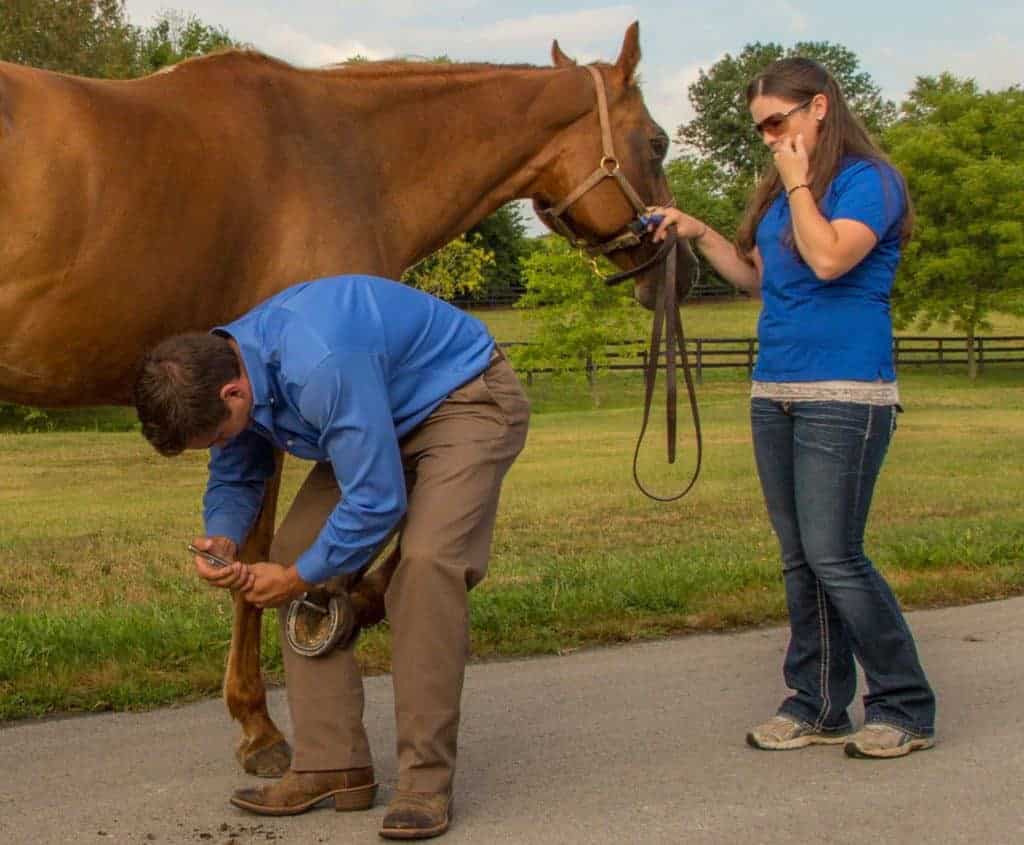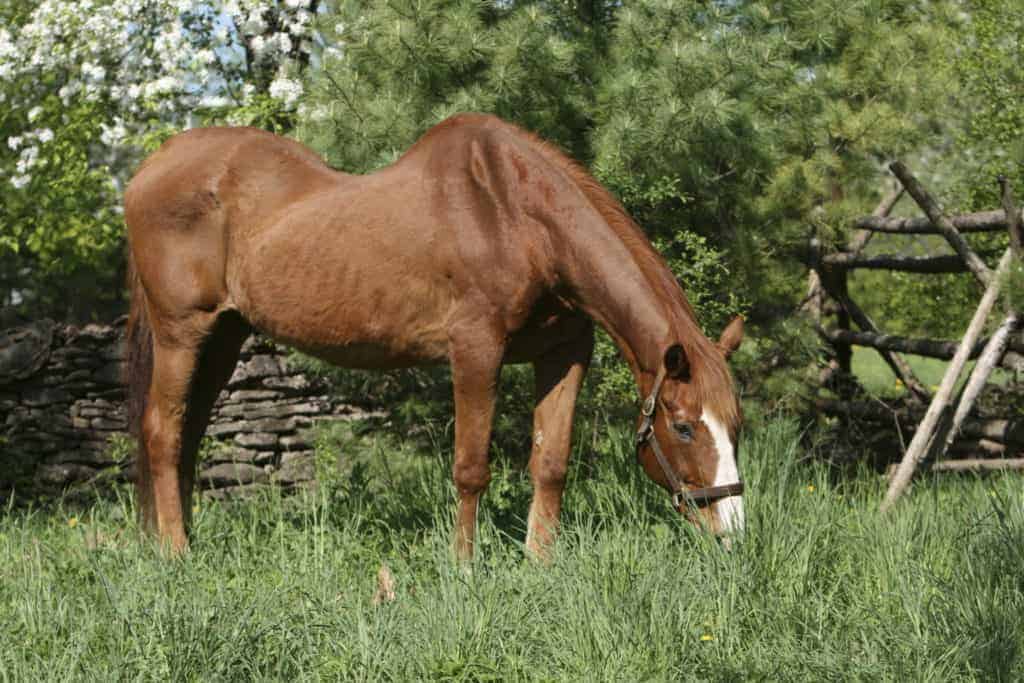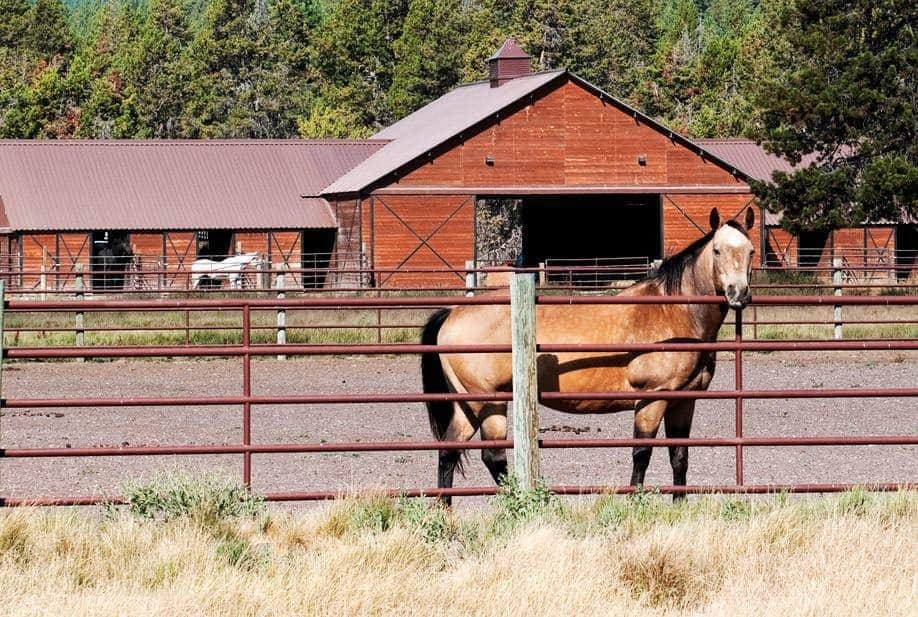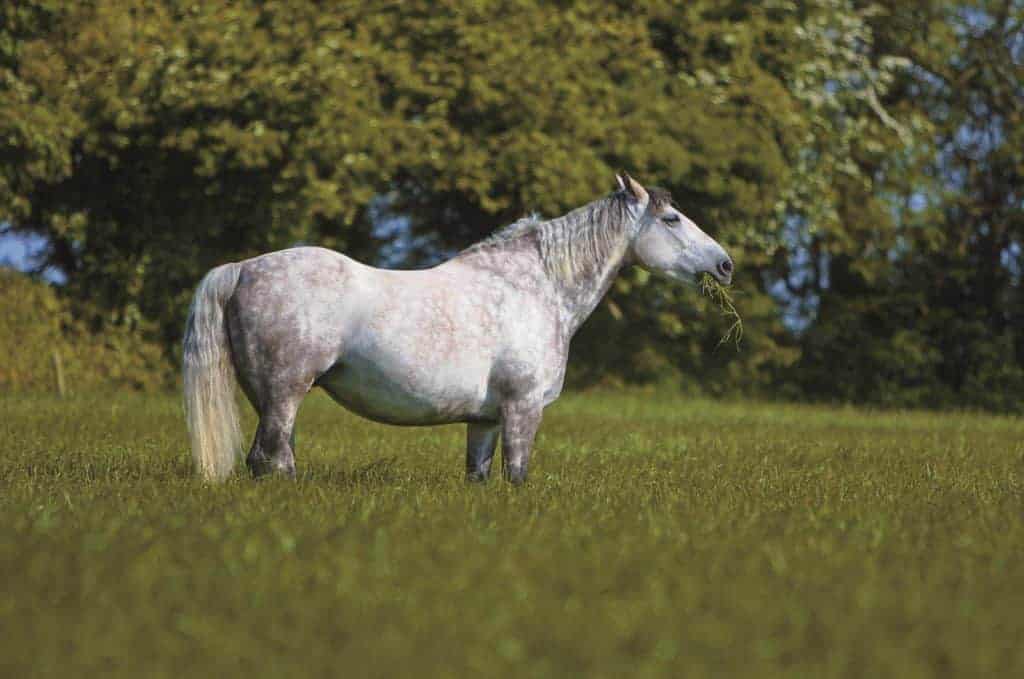
Study: Age Predicts Subclinical Laminitis in Horses
Researchers found that horses 25 years and older are more likely to suffer chronic laminitis even if they aren’t showing obvious clinical signs of disease.
Laminitis (commonly called “founder”) affects an estimated 7-14% of the world’s equine population. It’s the inflammation of the tiny, interwoven lamellae that attach a horse’s hoof to the underlying coffin bone (third phalanx, or P3) and support the horse’s entire body weight. Anything that impacts the integrity of the lamellae, such as inflammation, weakens their hold. This causes the coffin bone to displace within the hoof capsule and move toward the ground. The condition is very painful and is often life-threatening to horses.
The same disease has several different causes, which include:

Researchers found that horses 25 years and older are more likely to suffer chronic laminitis even if they aren’t showing obvious clinical signs of disease.

Owning a horse over his lifetime can be rewarding, but you need to be prepared for specific costs related to his care. Learn about senior horse research studies and what veterinarians say you should watch for as your horse ages.

By cutting the DDFT, veterinarians can stop one of the forces that pulls on the coffin bone during laminitis.

A review of research into laminitic pain in horses found veterinarians rely on a multimodal approach for pain management.

Laminitic horses try to keep off their painful toes as much as possible. But as a new biomechanics study shows, they can’t—at least not all the time.

Dr. Amanda Adams of the University of Kentucky, in Lexington, describes her senior horse research, which focuses on EMS, PPID, and immune system health.

British researchers reviewed more than 150 equine microbiome studies. From colic to laminitis to pregnancy, here’s what they found.

Non-steroidal anti-inflammatory drugs serve an important role in managing equine pain and inflammation, but sometimes they can do more harm than good.

Find out what hoof problems you can safely manage yourself and when to call in your farrier and/or veterinarian.

A lot of people use the words laminitis and founder interchangeably. Are these two conditions the same thing?

Your laminitis survivor’s true prognosis depends on how you manage him after the worst is over.

As horses get older, they face common age-related conditions and diseases that require management and care. Learn more about those conditions and diseases in this slideshow.

A psychologist documented and assessed a holistic farrier’s complex communication skills while handling a laminitis case.

Recent research has given us more insight into how to manage horses affected by or vulnerable to laminitis. If your horse falls into the at-risk category, consider these diet changes.

As benign as it might seem, this fresh forage can cause more harm than good. Here’s what to remember.

Horses can experience more than one disease process at the same time, an occurrence known as comorbidity. In this article, we’ll take a look at equine diseases such as PPID and laminitis that veterinarians most commonly see in conjunction with other conditions.
Stay on top of the most recent Horse Health news with
Notifications